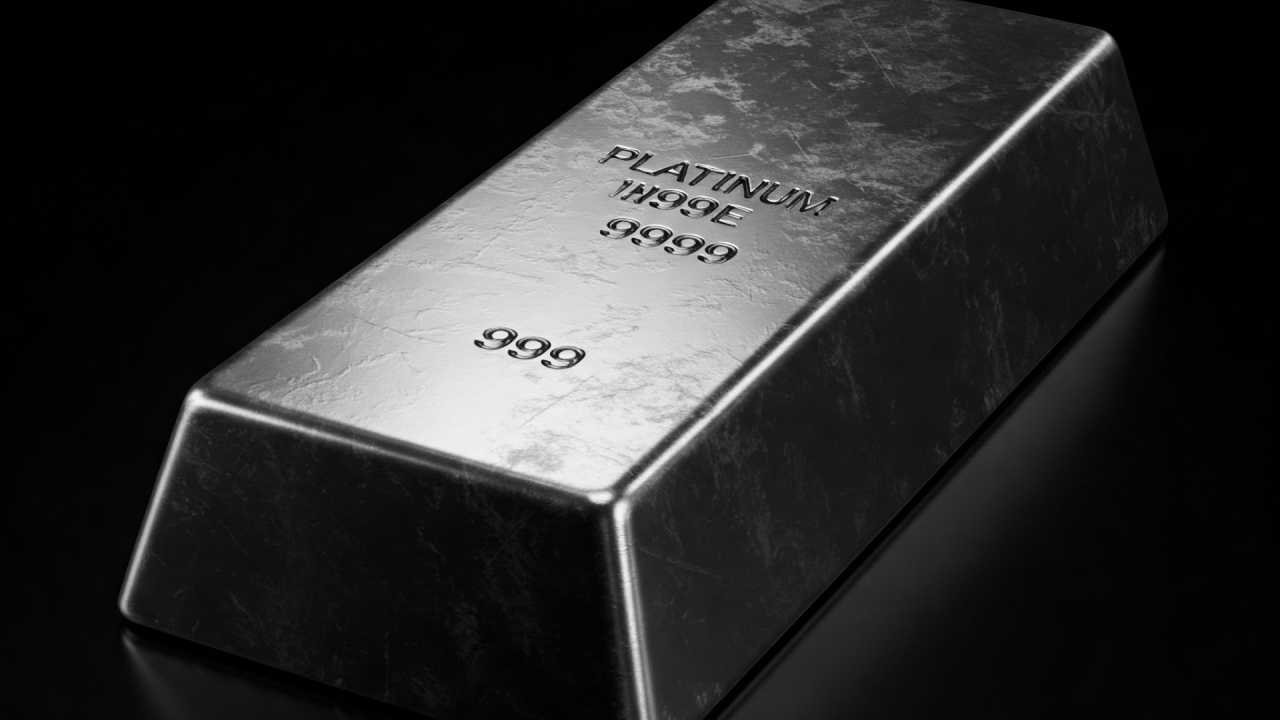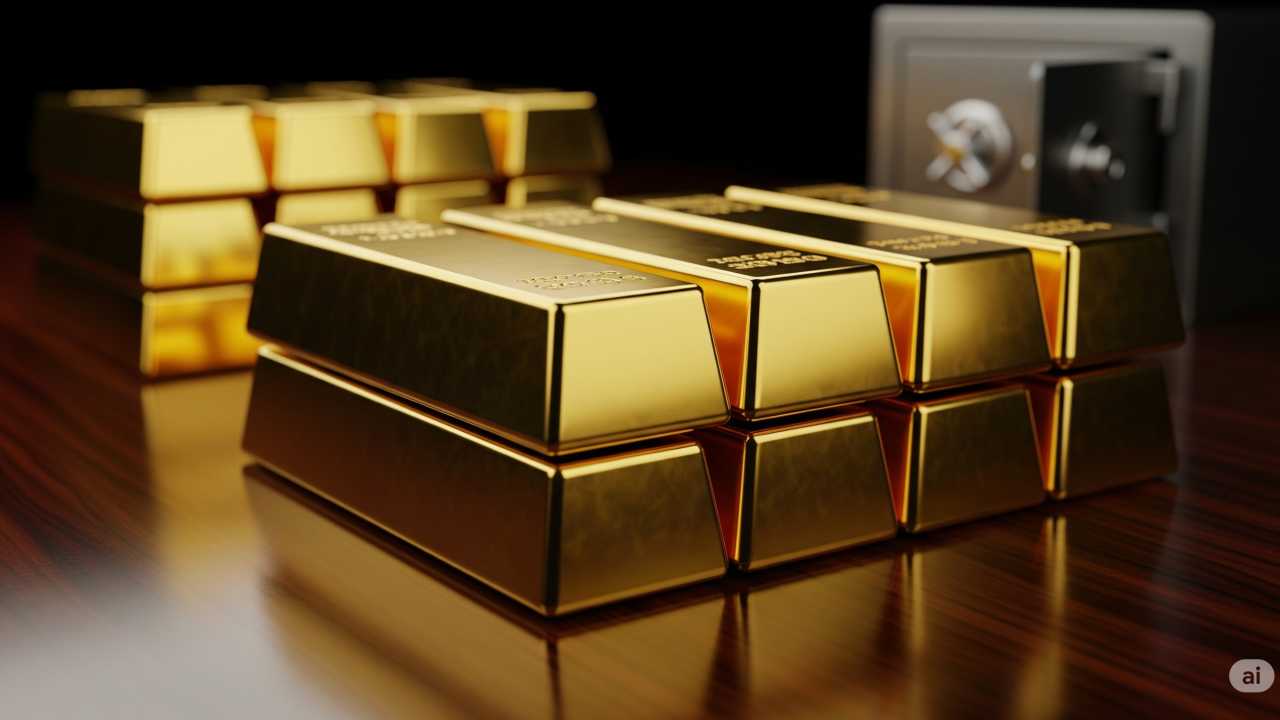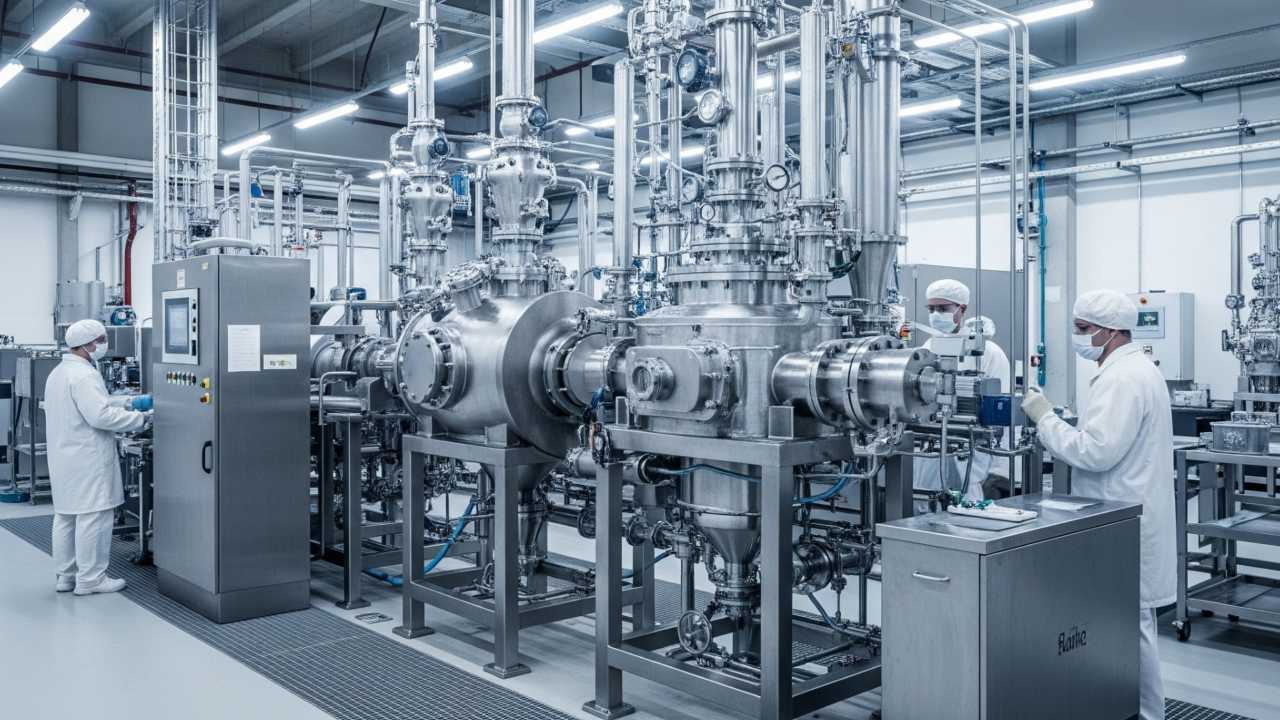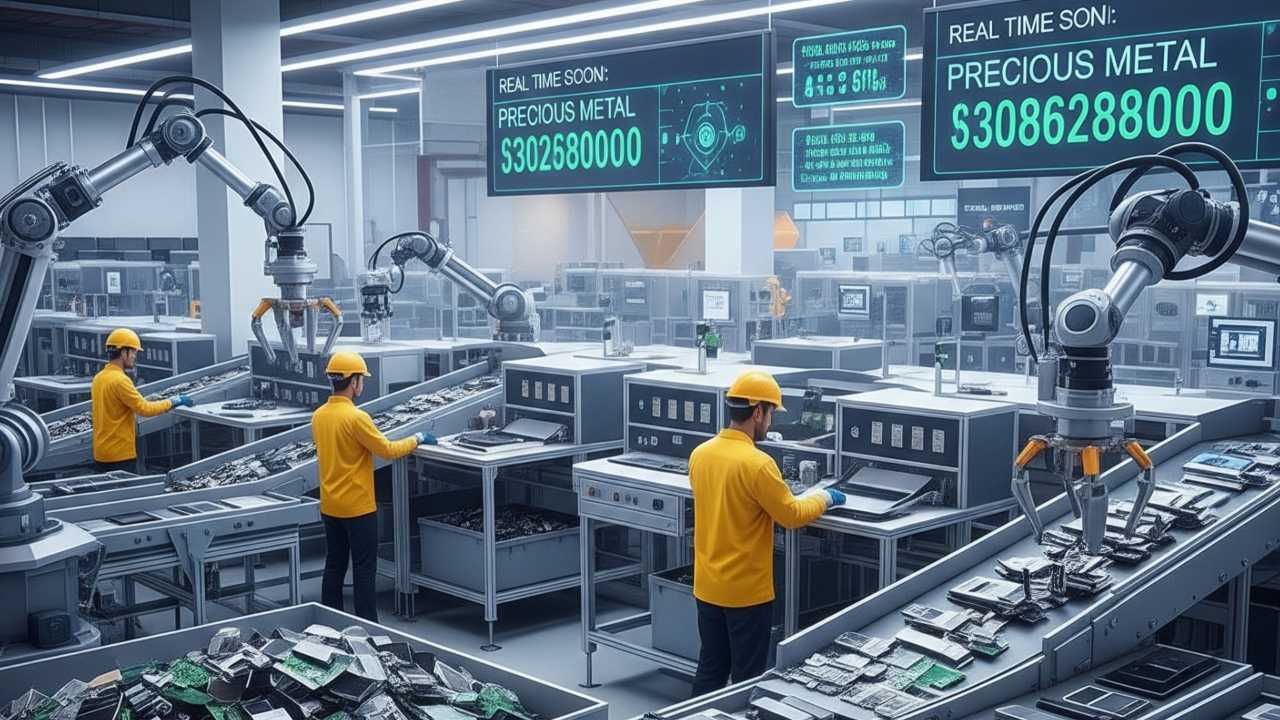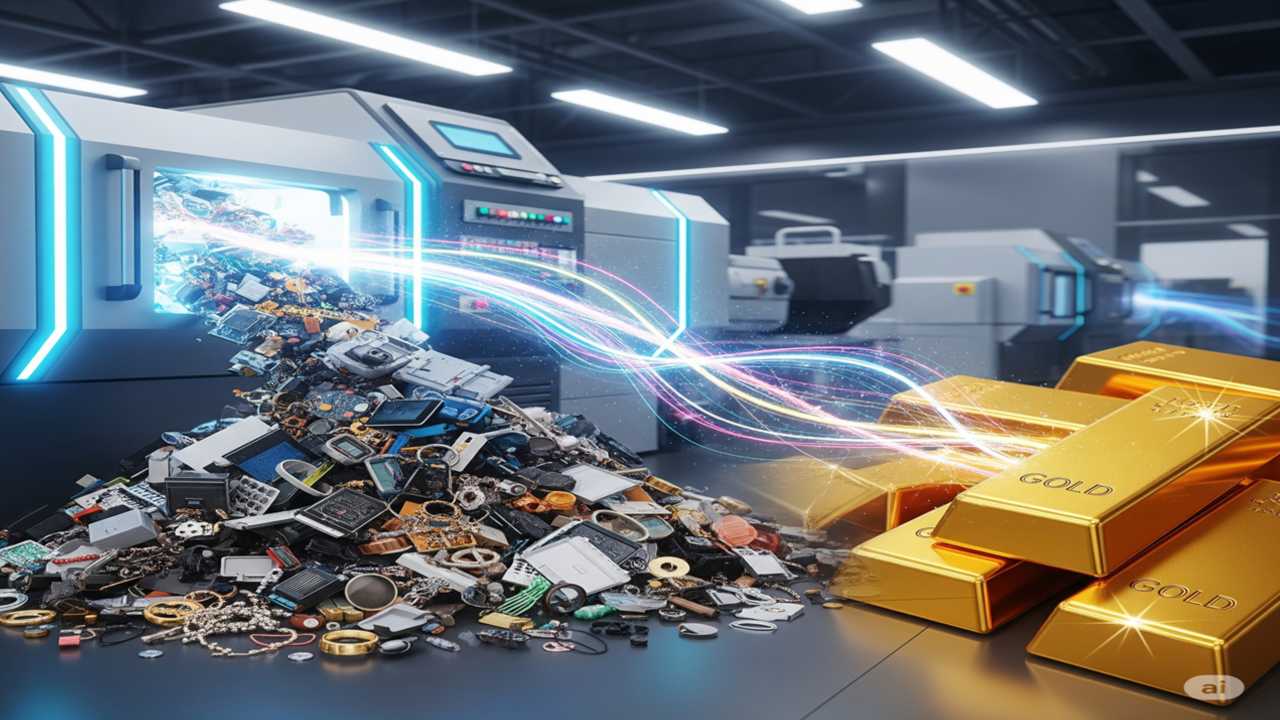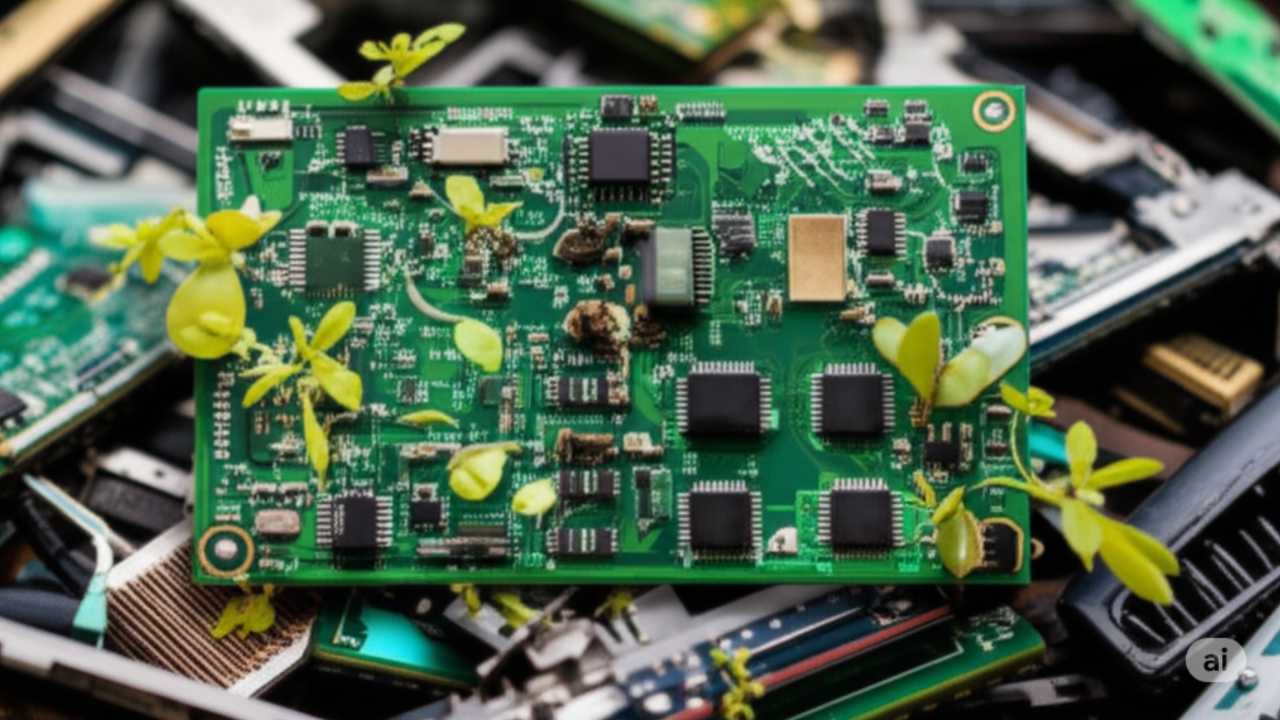Platinum Refining: What Makes It So Challenging?
Platinum, a lustrous, silvery-white metal, is far more than just a symbol of luxury. Its unique chemical and physical properties make it indispensable in a wide array of critical applications, from catalytic converters that clean our air to electrodes in medical devices and crucial components in various industrial processes.
However, extracting and purifying this valuable metal is a formidable task, fraught with challenges at every stage.
The journey from ore to high-purity platinum is a complex and often arduous process, making platinum refining one of the most demanding metallurgical endeavors.
The difficulties in platinum refining stem from a combination of factors, including the metal’s inherent chemical properties, its typically low concentration in ores, the presence of a complex mix of impurities, and the intricate, multi-stage processes required for separation and purification.
In this exploration, we will delve deeper into the multi-layered complexities of platinum refining, examining the factors that make this process so challenging, its environmental and economic implications, and the technologies employed to surmount these hurdles.
The Nature of Platinum and Its Ores: A Challenging Starting Point
Unlike some metals that occur in relatively pure forms, platinum is rarely found in large, easily mineable deposits of native metal.
It is most commonly found alloyed with other platinum group metals (PGMs) – palladium, rhodium, ruthenium, iridium, and osmium – and often associated with base metals like nickel, copper, iron, gold, and silver. These complex geological occurrences present the first major hurdle in refining.
The concentration of platinum in its ores is remarkably low. Even in rich deposits, the grades can be as low as a few grams per ton of ore.
This necessitates the processing of vast quantities of material to yield a small amount of platinum, significantly increasing the scale and cost of mining and initial processing. For instance, a ton of ore might yield only a few grams of platinum, which means that vast amounts of ore must be processed to recover an economically viable amount of the precious metal.
Furthermore, the PGMs share remarkably similar chemical properties, making their separation a particularly challenging puzzle.
Their similar reactivity and behavior in chemical solutions require highly selective and often repetitive processes to isolate each metal to a high degree of purity. This is a key challenge, as the metals are often chemically indistinguishable under conventional methods, making it difficult to isolate platinum without also recovering other PGMs.
In addition to the low concentrations and similar chemical properties, platinum is also often found in ores that contain significant amounts of other base metals like copper, nickel, and iron. These base metals can further complicate the refining process, as they need to be separated out early in the process to avoid contaminating the platinum and other valuable PGMs.
The Multi-Stage Refining Process: A Gauntlet of Complexity
The refining of platinum is not a single process but rather a series of intricate steps, each with its own set of challenges.
These stages typically include mining, concentration, smelting, base metal removal, PGM separation, and final purification. Each of these steps is crucial in ensuring the high purity of the final platinum product, and the efficiency of each step directly impacts the overall success of the refining operation.
Mining and Concentration
The initial steps involve extracting the ore from the earth, often through complex underground mining operations due to the depth of platinum deposits. The mined ore is then subjected to crushing and grinding to break it down into smaller particles.
Once the ore has been reduced in size, concentration techniques like froth flotation are employed to increase the platinum group metal (PGM) content.
Froth flotation uses a chemical reagent to create a frothy layer on the surface of a water-based slurry that selectively binds to the target minerals. The PGM-containing concentrate can then be collected and further processed.
While these methods increase the PGM content, the concentrate is still a complex mixture of PGMs, base metals, and other gangue (waste) material. The efficiency of these initial steps directly impacts the downstream refining load, as any inefficiencies in concentration will lead to larger volumes of material needing to be processed in subsequent stages.
Smelting
Once the PGM-rich concentrate has been prepared, it is typically subjected to high-temperature smelting.
This pyrometallurgical process aims to remove some of the base metals and further concentrate the PGMs into a matte. Smelting requires significant energy input and careful control of temperature and atmosphere to optimize the separation of desirable metals from impurities.
The smelting process can be quite complex, as the temperature must be high enough to melt the ore but not so high that it damages or volatilizes the precious PGMs. Additionally, the atmosphere in the furnace must be carefully controlled to avoid oxidation of the metals, which could interfere with their separation and recovery.
The resulting matte still contains a mixture of PGMs and remaining base metals, requiring further treatment to remove the base metals.
Base Metal Removal
The matte is then treated to remove the bulk of the remaining base metals, often through hydrometallurgical processes like leaching with acids. This step is crucial to reduce the impurity load before the more delicate PGM separation begins.
Leaching involves adding strong acids, such as sulfuric acid or hydrochloric acid, to dissolve the base metals. The dissolved metals are then separated from the remaining solid material through filtration or other separation techniques.
However, incomplete removal of base metals can complicate subsequent stages and impact the final purity of the platinum.
For example, even trace amounts of base metals can interfere with the selective precipitation or solvent extraction steps used to separate platinum from other PGMs. Therefore, achieving high efficiency in base metal removal is critical to ensuring the success of the overall refining process.
PGM Separation and Purification
This is arguably the most challenging phase of platinum refining. It involves separating platinum from the other PGMs and achieving high purity levels.
Various techniques are employed, often in combination, including selective precipitation, solvent extraction, and ion exchange. These methods are used to isolate platinum from the other PGMs, as well as from any remaining base metal impurities.
Selective Precipitation
Selective precipitation relies on the differences in solubility of PGM compounds under specific chemical conditions. By carefully controlling factors like pH, temperature, and the addition of specific reagents, individual PGMs can be selectively precipitated out of solution.
However, achieving high selectivity can be difficult, and multiple precipitation and redissolution steps are often required, leading to yield losses and increased processing time. The formation of fine precipitates can also lead to filtration challenges, making the process more time-consuming and less efficient.
Solvent Extraction
Solvent extraction involves using organic solvents to selectively dissolve and separate specific metal ions from an aqueous solution. Solvent extraction offers better selectivity and can be more efficient than precipitation for certain separations.
However, it requires careful selection of appropriate organic solvents, precise control of process parameters, and management of large volumes of potentially hazardous chemicals. Moreover, the organic solvents must be carefully managed and disposed of to prevent environmental contamination.
Ion Exchange
Ion exchange utilizes specialized resins to selectively adsorb and separate metal ions based on their charge and size. Ion exchange can be effective for polishing and achieving very high purity levels.
However, it can be slow, and the capacity of the resins can be limited, requiring regeneration or replacement. Moreover, the process is generally more expensive and can involve significant downtime for maintenance.
Final Purification
Even after the primary separation steps, further purification is often necessary to achieve the high purity levels required for specific applications (e.g., 99.95% or higher). Techniques like electrolytic refining, where an electric current is used to deposit pure metal onto a cathode, or further chemical treatments like dissolution in aqua regia (a highly corrosive mixture of nitric and hydrochloric acids) followed by controlled precipitation, are employed.
Working with highly corrosive reagents like aqua regia presents significant safety and material handling challenges. The electrolysis process also requires careful control to ensure that only platinum is deposited and that impurities remain in the solution.
Melting and Casting
The final step involves melting the purified platinum powder or sponge and casting it into desired shapes, such as ingots or bars. Platinum has a very high melting point (1768.3 °C), requiring specialized high-temperature furnaces and crucibles that can withstand these extreme conditions without contaminating the molten metal.
The casting process must also be carefully controlled to avoid introducing impurities or defects in the final product.
Impurities: The Persistent Nemesis
The diverse range of impurities found in platinum ores and concentrates is a major contributor to the complexity of refining. These impurities can include:
- Other Platinum Group Metals: As mentioned earlier, the chemical similarity of PGMs makes their separation a significant challenge. Impurities like palladium, rhodium, iridium, ruthenium, and osmium need to be meticulously removed to achieve high-purity platinum. Incomplete separation of these metals can negatively impact platinum’s properties and performance in its applications.
- Base Metals: Copper, nickel, iron, lead, chromium, zinc, cobalt, manganese, and aluminum are common base metal impurities. While many are removed in the earlier stages, residual amounts can persist and interfere with PGM separation and purification steps. Their removal requires specific chemical treatments tailored to their properties.
- Other Elements: Silicon, carbon, sulfur, and various gases can also be present. Silicon, often present as silicates, can form refractory compounds that are difficult to dissolve. Carbon and sulfur can introduce unwanted elements during high-temperature processes. Dissolved gases can affect the integrity of the final cast metal.
Each impurity behaves differently in the various refining stages, necessitating a complex and often tailored approach depending on the composition of the incoming material. The presence of multiple impurities simultaneously further complicates the process, as the removal of one impurity might be affected by the presence of others.
Economic and Environmental Considerations: Adding Layers of Difficulty
Beyond the technical complexities, economic and environmental factors significantly contribute to the challenging nature of platinum refining.
High Costs
The entire process, from mining to final purification, is capital and energy-intensive. The low ore grades require processing large volumes of material, leading to high mining and milling costs.
The complex chemical and high-temperature processes require specialized equipment, skilled labor, and significant energy consumption. The cost of reagents, particularly corrosive acids and specialized solvents, is also substantial.
Market Volatility
The price of platinum, like other precious metals, is subject to significant fluctuations based on global supply and demand, economic conditions, and geopolitical factors.
This volatility can impact the profitability of refining operations and requires careful risk management. Fluctuating prices can also influence the investment in new technologies or the expansion of refining facilities.
Environmental Impact
Platinum refining, particularly the pyrometallurgical and hydrometallurgical steps, can have significant environmental consequences if not managed properly. Air emissions containing sulfur dioxide and other pollutants from smelting, the generation of large volumes of acidic and metal-bearing wastewater, and the disposal of solid waste residues are major concerns.
Strict environmental regulations necessitate significant investment in pollution control technologies and responsible waste management practices, adding to the overall cost and complexity.
Recycling Challenges
While recycling of platinum, particularly from catalytic converters, is an increasingly important source, refining secondary materials presents its own set of challenges.
The composition of scrap material can be highly variable, containing a wide range of impurities and other materials that need to be separated before the platinum can be recovered and refined to high purity.
Final Thoughts: A Testament to Metallurgical Expertise
In conclusion, the refining of platinum is a highly challenging undertaking due to the metal’s scarcity, its complex association with other elements in nature, and the demanding multi-stage processes required for its extraction and purification.
The inherent chemical similarities of the platinum group metals, the presence of a diverse range of impurities, the high temperatures and corrosive chemicals involved, and the significant economic and environmental considerations all contribute to the complexity.
Successfully refining platinum to the high purity levels demanded by modern industries is a testament to advanced metallurgical science and engineering. It requires sophisticated technologies, stringent process control, a deep understanding of complex chemical systems, and a strong commitment to environmental responsibility.
As demand for platinum in critical applications continues to grow, the pursuit of more efficient, cost-effective, and environmentally sustainable refining methods remains an ongoing and vital area of research and development in the metallurgical industry. The challenges are significant, but the value and importance of platinum make the endeavor worthwhile.




